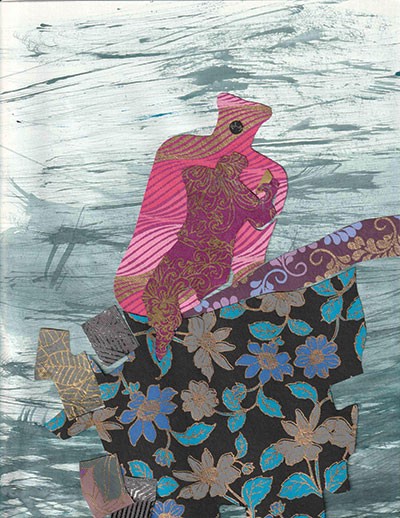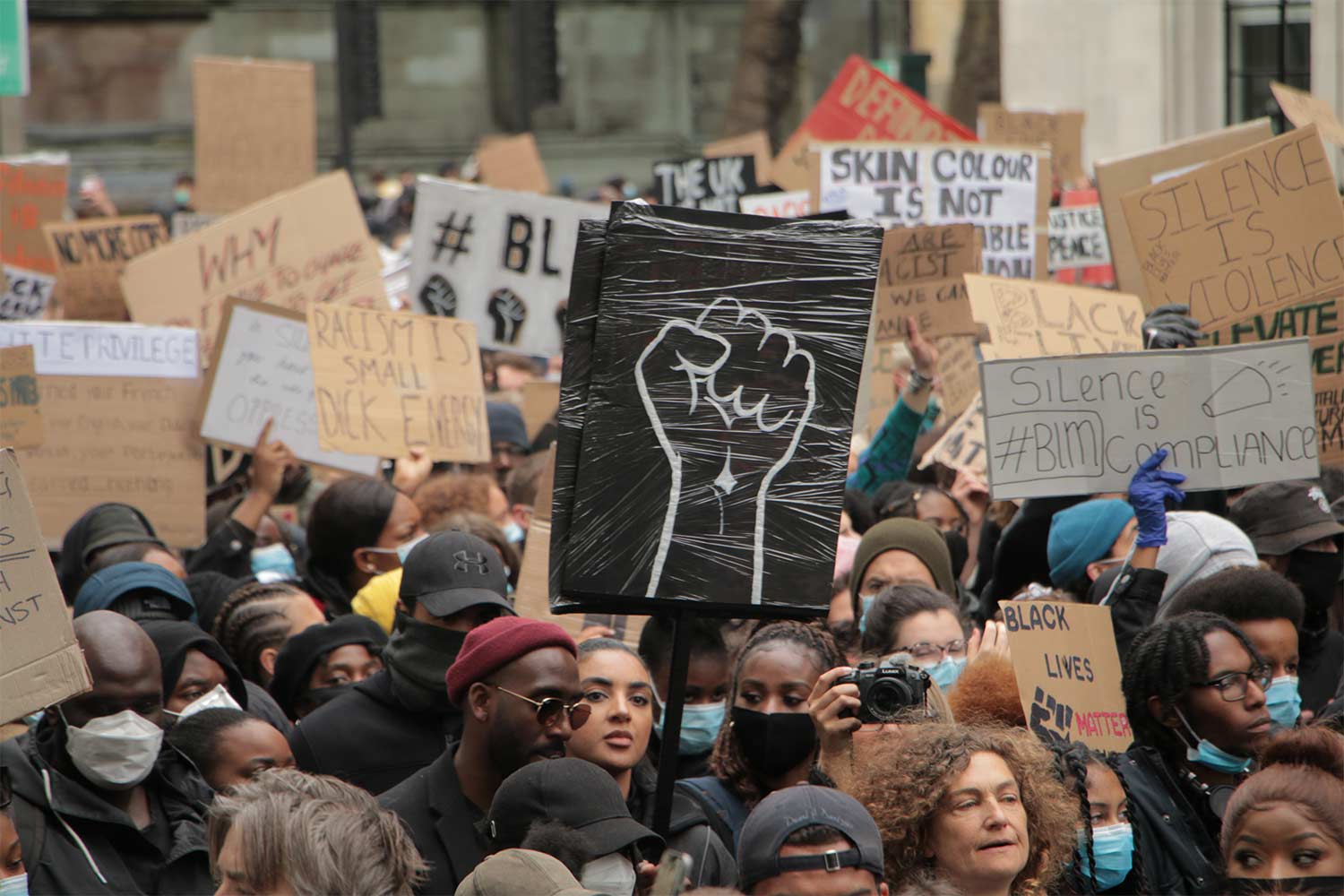Fighting for Black Lives Through Chronic Pain
I can’t protest with my body like some folks, but there are so many other forms of activism.
I am a fat, Black, Queer woman from the South.
The global events of 2020 have impacted me heavily, and I know I’m not alone; George Floyd’s killing in May rocked marginalized and empathetic communities in a loud, global way. Despite systemic racism’s inescapable impact on the Black community, this instance of police brutality — alongside the spring and summer murders of Breonna Taylor and several others — sparked sustained worldwide protests. Massive numbers of civil actions have taken place, in every major US city and some smaller ones (including Richmond, VA, my very own capital of the Confederacy). The collective unrest in the US this year is unprecedented for this generation.
Folks who never engaged in activism before took to the streets, willing to risk it all. Photos show them lying in the middle of the street, fist-fighting with cops, dodging rubber bullets. Those photos all send a similar message: This is the way we engage. This is the way we fight back. This is what an activist looks like.
Photos of protests send a message: This is the way we fight back. This is what an activist looks like.
Those of us with bodies that receive oppression for simply existing — due to race, ethnicity, neighborhood, native language, physical or mental ability, or any combination of these and other factors — have been living this activism life for a while now, but we receive this same messaging. Even intersectional social justice movements often fail to consider people with disabilities.
I am a fat, Black, Queer woman from the South. I have chronic pain.
I’m unable to stand without pain for more than 15 minutes at a time. If using my body for protest is the only way to engage, how am I supposed to push back against the systemic inequities that influence marginalized peoples’ livelihood — my livelihood — on a daily basis? How am I to actively resist the impacts of ableism, racism, and homophobia on the safety of my community?

In the media and popular culture, the term “disabled” often evokes a particular image: a white child in a wheelchair. Even within progressive movements, we don’t recognize that every single community includes people who are disabled. Many of us live with “invisible disabilities,” and their invisibility makes our pain easy to dismiss, or even deny. Able-bodied folks assume that if they cannot see my disability in order to validate it, then I should be able to perform exactly as they do.
I have held more than one job where I was expected to canvass door-to-door. When an election rolled around, I felt anxious about being honest with my supervisor at one of those jobs, fearing they’d see me as “unfit.” I racked my brain to figure out how to complete the task, but I knew it wasn’t possible. A single packet of names would take minimum an hour of walking; on a good day, I can walk about 20 minutes before I hit my pain threshold, have to stop, and then deal with subsequent pain — potentially for the remainder of the day.
It turned out this employer was understanding, and shifted my efforts to alternate contact methods. I was relieved. I’d feared my limitations could lead to organization-wide disappointment or losing my job. I wasn’t sure which would have been worse.
I envision myself as the character who tells their comrade to save themselves. In Hollywood, their heroic efforts would push us to our destination. In reality, I’d get us both killed.
The physicality in advocacy activities goes unnoticed by the able-bodied. Standing rallies are common, but because I feel embarrassed to bring a chair, I often skip them. I have pushed myself to attend in-person protests, sitting in the back for easy escape. I come for the chants and speeches, but skip the marches, knowing they’ll be longer than I can handle. I know I’ll make it a quarter of the way before I have to sit down. What good am I there?
I envision myself as the character in the war movie who tells their comrade to leave and save themselves. The people I spend my time with would absolutely throw me over their shoulders in a feat of super-human strength, and attempt to carry me to safety rather than leave me to die. In a Hollywood blockbuster, their heroic efforts and an encouraging musical score would push us to our destination. In reality — sans makeup artists and green screens — I’d get us both killed.
I am a fat, Black, Queer woman from the South. I have chronic pain. I am loud.
I have pushed myself past my limits repeatedly. I regret those times, as I now have even less capacity. Because I live in this fat, Black body, the default assumption about my aversion to physical activity is that it’s due to my weight. Because of fat-shaming culture, I regularly put my body in uncomfortable positions — sometimes reaping the repercussions for days afterwards.
I distinctly remember walking a mile to a work event a coworker told me was “just around the corner.” I stopped five times, each time considering whether to turn around and call someone to come get me. Each time, shame won over. I finally made it, and attempted to soothe the lump in my throat with the open bar. My left leg almost immediately went numb, and my hands shook from the pain. But I smiled and schmoozed with legislators and organizers like I was expected to.
Fighting for our liberation doesn’t have to look one way.
I cannot begin to count the number of times a group of friends or coworkers I was with expected everyone to walk somewhere without checking if we were okay to walk the distance required. Even those without diagnosable chronic pain, illness, or disability deserve a say in the activities their bodies participate in. Consider those who sweat easily or are easily winded. No one should make assumptions about other people’s comfort; we can’t know without asking.
Here’s what the activist world misses with these assumptions: Fighting for our liberation doesn’t have to look one way — there are many avenues of resistance. For a person at any intersection of oppression, existing as exactly who you are and showing up for yourself every day is resistance in itself.
I am a fat, Black, Queer woman from the South. I have chronic pain. I am loud. My partner is non-binary. I love talking about reproductive justice, sexuality, and the complexities of them both. And if I decided to never do another goddamn thing in relation to policy or activism, I would still be resisting.
We have to push back against the idea that participating in social movements requires us to put our safety and health on the line. When I do engage, I want the activist community to see my resistance as valid and important, even if I’m not doing it with my body. We all have different callings, talents, and areas of expertise, and not everyone is going to respond to societal inequalities in the same way.
The Oxford English Dictionary’s definition of activism is “…the use of vigorous campaigning to bring about social or political change.” This means folks passing out water at protests are just as vital as the ones who paid for it.
When I think about “visionary,” I see Black and Brown academics who push for higher education’s culture and coursework to be more inclusive. Because white supremacy has long told us that art centering communities of color has no connection to academic theory, choosing to weave our cultures into graduate coursework acts as direct pushback.
When I visualize “community,” I see Queer and/or Trans People of Color financing local relief efforts, and those impacted by racist and ableist housing laws, lack of Covid-19 support, and unfair wages supporting themselves is revolutionary.
If I decided to never do another goddamn thing in relation to policy or activism, I would still be resisting.
When I picture “resistance,” I picture Shantell Martin, the muralist who made Microsoft’s insensitivity a national talking point by publicly broadcasting their attempt to commission a Black Lives Matter-themed mural on an absurdly short timeline, “while the protests are still relevant.” Black women are often tone-policed and silenced for being overbearing and emotional. Choosing to speak the truth, even when your livelihood could be at stake, is an outright act of defiance of societal expectations.
When I envision “change makers,” I see the staff writers and editors who pushed their publications to capitalize Black before AP made it their standard. It is hard to speak up for marginalized communities when it can potentially ruffle feathers up the hierarchy.
When I imagine “revolution,” I see the social media influencers who gather receipts and call folks out on Twitter, the writers who speak their truths regardless of opposition, the folks who work in nonprofits and aim to change the tide through grassroots efforts and policy.
Innumerable people use their talents for social good, whether their writing, visual art, or performance. Folks like me who write articles about a protest’s organizers are just as impactful as the ones who attended.
The bottom line is that all our individual efforts are needed to make this thing we call revolution move forward. We all have a hand in pushing that arc of history towards justice, because it’s clear it won’t happen on its own.
I am a fat, Black, Queer woman from the South. I have chronic pain. My partner is non-binary. My loud, unapologetic existence and my dedication to telling the truth make a difference in my community.
Note: Some text has been removed from this article since its original publication to reflect a change in the author’s perspective that has occurred in the intervening years.
Print Issue: Winter 2021
Print Title: Standing Up for What's Right When It Hurts to Stand
